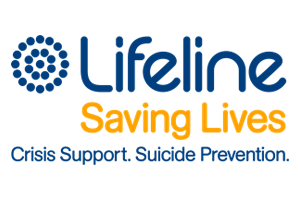Beyond Blue is a leading mental health organization in Australia that focuses on providing support and information to individuals dealing with anxiety, depression, and suicide. Their services include a 24/7 helpline, online chat, forums, and extensive resources to educate the public and reduce the stigma associated with mental health issues. Beyond Blue also engages in research and policy advocacy to improve mental health outcomes across the country.
Resources
Mental health organisations
Beyond Blue
Headspace
Headspace is dedicated to the mental health and well-being of young Australians aged 12-25. It offers early intervention services through a network of centres nationwide, providing access to mental health professionals, general health care, education and employment services, and alcohol and other drug support. Headspace aims to create a supportive environment for young people to seek help and develop resilience.
Lifeline
Lifeline provides crucial crisis support and suicide prevention services available 24/7 via phone, text, and online chat. It aims to offer immediate assistance to individuals in distress and connect them with ongoing support services. Lifeline also engages in public education campaigns to raise awareness about mental health issues and promote strategies for crisis intervention.
ReachOut
ReachOut is an online mental health service designed specifically for young people and their parents. It offers practical tools, tips, and support through articles, forums, and self-help resources. ReachOut focuses on empowering young people to manage their mental health and provides a safe space for them to share their experiences and seek advice from peers and professionals.
MensLine Australia
MensLine Australia provides targeted support for men dealing with mental health issues, relationship problems, and emotional well-being. Available 24/7, MensLine offers counselling services via phone and online chat, as well as resources tailored to men’s unique needs. The organisation aims to encourage men to seek help and address mental health challenges in a supportive, non-judgmental environment.
How to document your experience
Reporting workplace bullying is essential to halt harmful behaviour and ensure a respectful work environment. Start by documenting every incident meticulously. Record the details such as dates, times, locations, what was said or done, and any witnesses present. Collect any supporting evidence like emails, messages, or documents that substantiate your claims. Reviewing your company’s policies on bullying and harassment in the employee handbook or code of conduct will guide you through the reporting procedures.
If you feel safe, consider addressing the bully directly to let them know their behaviour is unacceptable and request them to stop, ensuring you remain professional and non-confrontational. If this is not feasible or if the bullying continues, report the behaviour to your immediate supervisor, unless they are the perpetrator. In that case, approach another manager or the supervisor’s superior. Filing a formal complaint with the Human Resources department is another crucial step. Provide all documented evidence and details, and request confidentiality if you are worried about retaliation.
Following up on your complaint is essential. Regularly ask HR or management for updates on the status of your complaint and the steps being taken to address the issue. Continue documenting any new incidents or responses from HR and management. If the bullying persists and your complaint is not adequately addressed, seek external help.
Additionally, consider professional support to manage the emotional toll of bullying. Seek counselling or utilise any Employee Assistance Programs (EAP) your employer offers. Evaluate your options to decide whether it is safe and healthy to stay in your current work environment or if you need to find a new job for your well-being. Monitor the situation for any changes in behaviour or workplace culture following your report, and continue to report any new incidents if necessary. A proactive and persistent approach is vital to addressing workplace bullying effectively.






